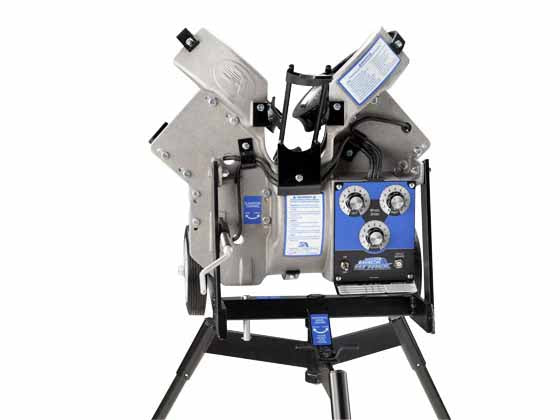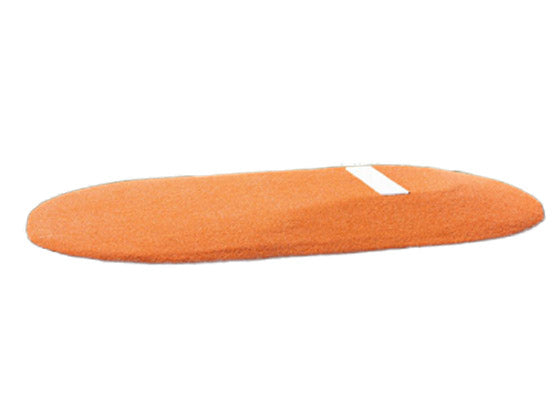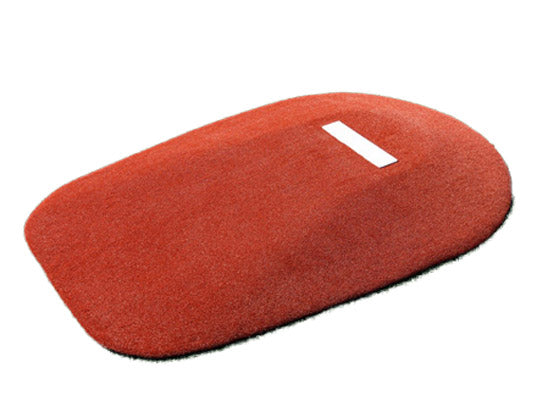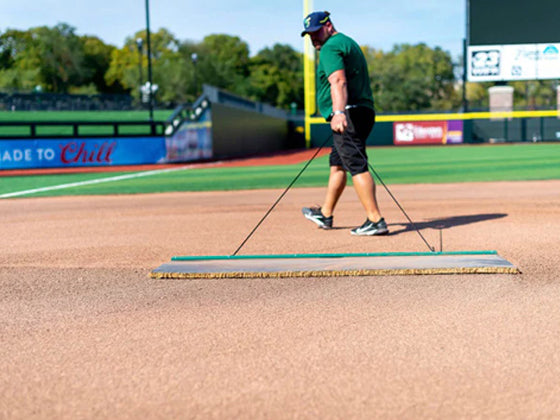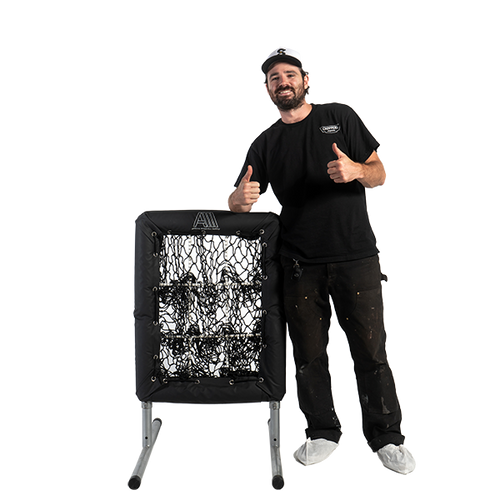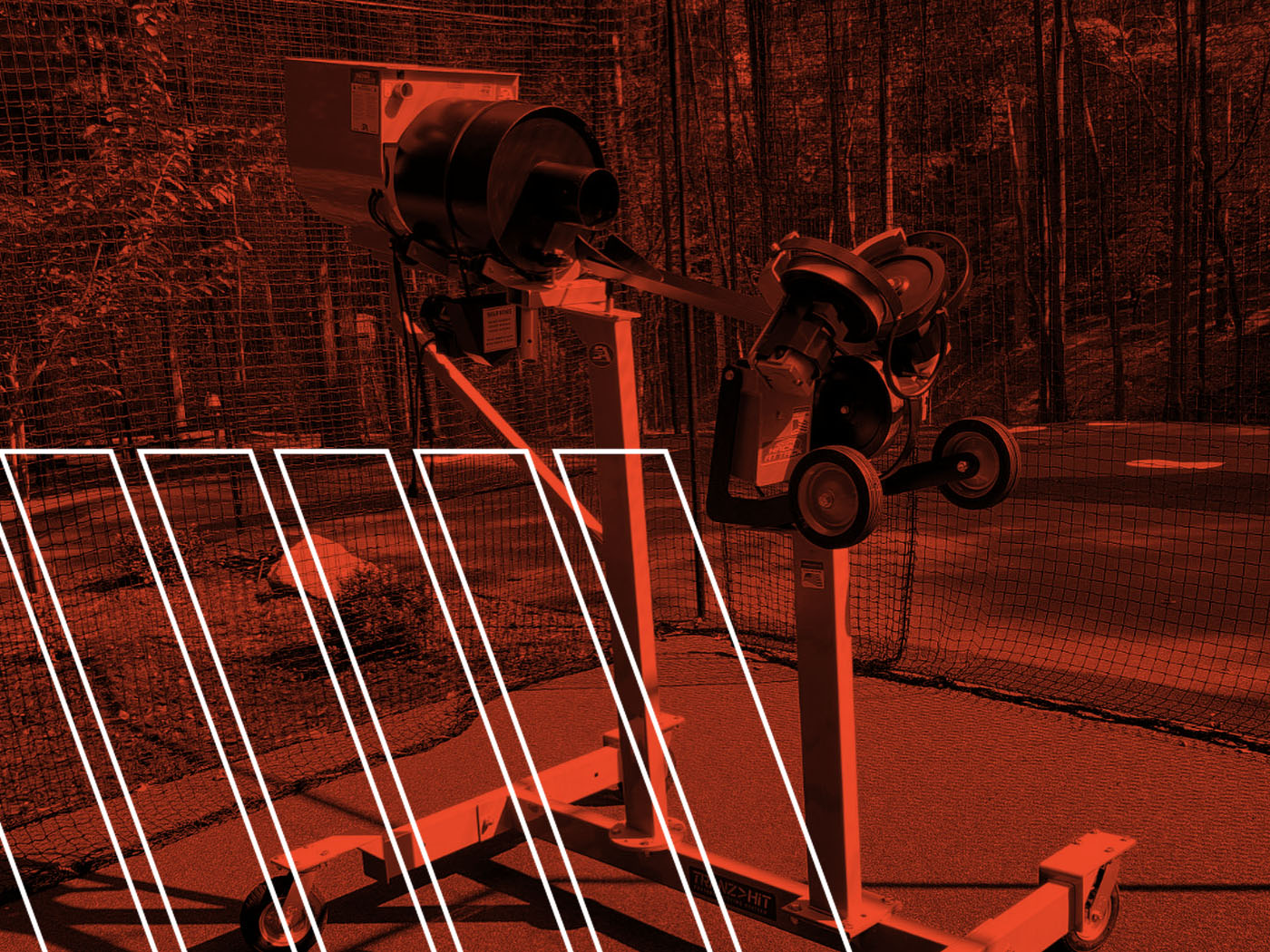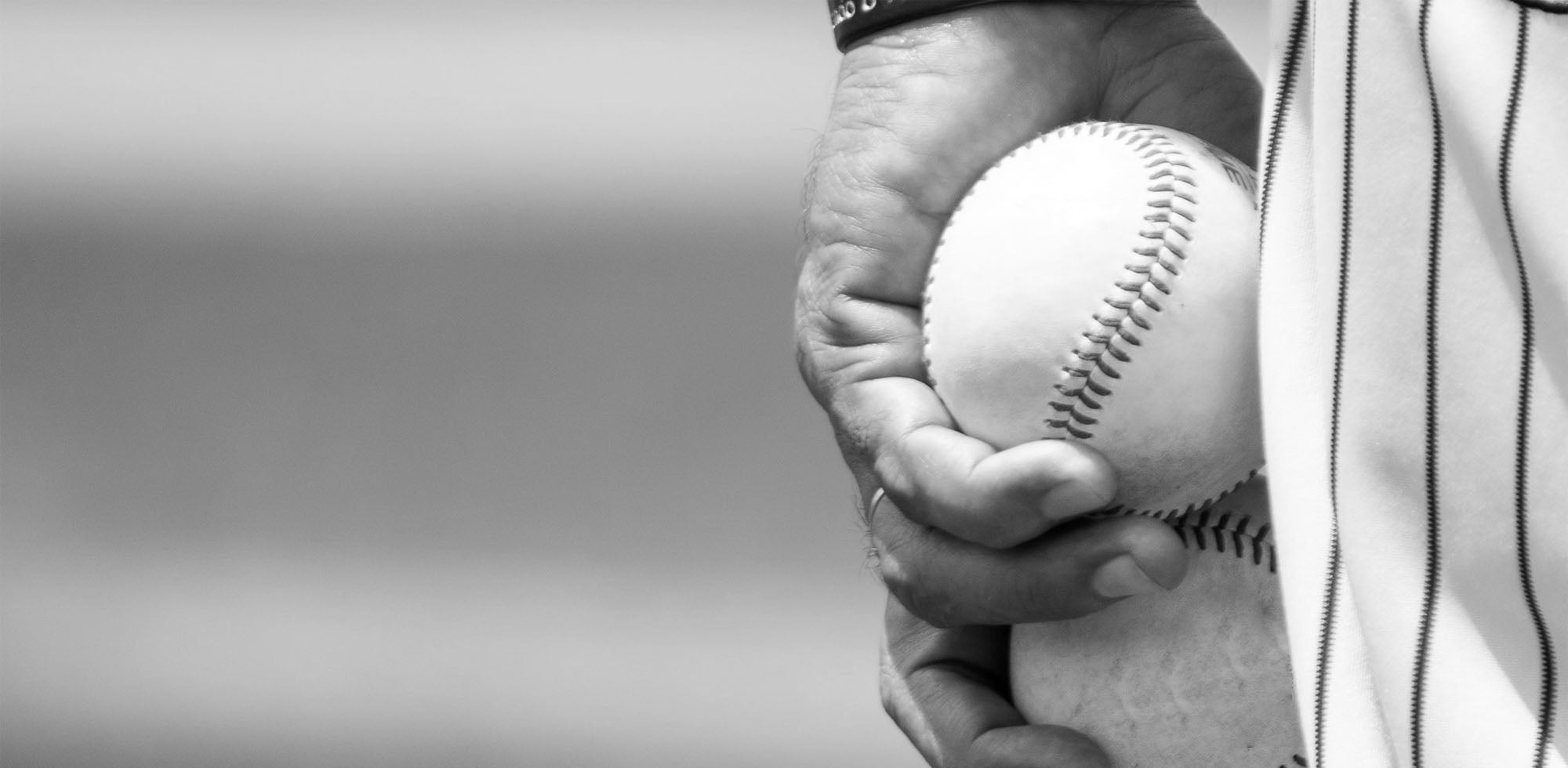How to Run Solo Pitching Machine Drills
Hey there, baseball enthusiasts! Ever wondered how to level up your game when you're practicing solo? One word: Pitching machines. They're not just for team practices; they're a solo player's best friend. Let's dive into how you can harness the power of these machines to sharpen your skills.
Setting Up Your Pitching Machine
Choosing the right pitching machine is crucial. Whether it's for fastballs or curveballs, find one that suits your needs. Make sure it can pitch fast enough and throw the types of pitches you need in order to get the most out of your solo practice.
For solo pitching machine practice to work effectively, a pitching machine feeder is an absolute must. This tool will allow you to train by yourself, otherwise it will be impossible. The more training balls it holds, the better!
Setting Up at the Right Distance
After you know the ins and outs of your machine, you have to learn how far from home plate to set it up. The closer you put it, the less time you will have to react. Refer to this article about how to use a pitching machine to learn more!
And remember, safety first! Ensure you've got all your gear on and the machine is set up correctly.
Basic Hitting Drills with a Pitching Machine
Begin your journey with the fundamentals. Even Major League players like Derek Jeter started with the basics. Let's take a look at some basic pitching machine drills.
1. Timing and Hand-Eye Coordination Drill:
- How to Execute: Start with the machine set for slow pitches. Focus on watching the ball's path and timing your swing to meet it.
- Real-Life Example: Imagine you're like Ichiro Suzuki, known for his impeccable timing. Visualize each hit like he would, focusing on the ball's movement.
- Progression Tip: Gradually increase the speed, simulating real-game scenarios.
2. Perfecting the Batting Stance and Swing Mechanics:
- How to Execute: Experiment with various stances. Keep your feet shoulder-width apart and knees slightly bent. Practice swinging smoothly.
- Advanced Tip: Think of Aaron Judge's powerful yet controlled swings. Notice his balanced stance and how he uses his whole body.
- Common Mistakes: Avoid over-swinging. Balance is key – power comes from technique, not just strength.
If you're struggling with hitting the ball consistently, focus more on the stance and less on power. Remember, every great hitter started with mastering the basics. Keep practicing, and you'll see improvement!
By following these steps and keeping these examples in mind, you'll be building a strong foundation for your batting skills.
Advanced Hitting Techniques with a Pitching Machine
1. Power Hitting Drill:
- Objective: Increase bat speed and power in your swings.
- Setup: Adjust the pitching machine for faster and more challenging pitches.
- Execution: Focus on generating power from your lower body, transferring it through your core to your arms. Practice hitting pitches with varying speeds, concentrating on driving the ball with force.
- Advanced Tip: Think of sluggers like Giancarlo Stanton. Analyze videos of their swings to understand the mechanics of power hitting.
- Benefit: This drill develops the muscle memory needed for powerful hitting and improves the ability to handle faster pitches.
2. Hitting Different Pitch Types:
- Objective: Become proficient at hitting a variety of pitches.
- Setup: Program the pitching machine to simulate different pitch types – curveballs, sliders, fastballs, and changeups.
- Execution: Practice identifying the pitch type as quickly as possible and adjust your swing accordingly. Work on your timing and bat path for each type of pitch.
- Progression: Start with easier pitches and gradually increase the difficulty as you improve.
- Benefit: Improves adaptability at the plate, essential for facing advanced pitchers in competitive scenarios.
3.Situational Hitting Practice:
- Objective: Develop strategic hitting skills based on different game situations.
- Setup: Use the pitching machine to simulate specific game scenarios – runners on base, different counts, etc.
- Execution: Practice adjusting your hitting approach based on the situation. Focus on hitting for contact, driving in runs, or going for extra bases as needed.
- Advanced Strategy: Incorporate mental rehearsals of game situations, envisioning various scenarios and how you would respond.
- Benefit: Enhances game IQ and decision-making skills, making you a more versatile and effective hitter.
Each of these advanced hitting drills with a pitching machine is designed to push your skills to the next level, preparing you for the complexities and challenges of competitive baseball. Remember, the key to mastering these techniques lies in consistent practice and a deep understanding of the mechanics involved.
Fielding Practice with a Pitching Machine
1. Ground Ball Fielding Drill:
- Objective: Enhance skills for effectively fielding ground balls.
- Setup: Position the pitching machine to simulate ground balls at various speeds and angles.
- Execution: Focus on proper body positioning, footwork, and glove work. Practice approaching the ball, getting in front of it, and fielding it smoothly.
- Advanced Technique: Work on quick transitions from fielding to throwing. Practice on different infield surfaces to adapt to varying ball bounces.
- Benefit: Improves reaction time and accuracy in fielding ground balls, essential for infielders.
2. Fly Ball Catching Techniques:
- Objective: Develop confidence and skill in catching high fly balls.
- Setup: Adjust the pitching machine to launch fly balls. Include variation in height and distance.
- Execution: Work on reading the ball's trajectory and positioning yourself correctly under the ball. Focus on the timing of the jump and catch.
- Advanced Strategy: Practice catching with both hand-eye coordination and awareness of the outfield boundaries.
- Benefit: Enhances outfield skills, including tracking fly balls and making critical catches, especially in high-pressure situations.
3. Dynamic Fielding Scenarios:
- Objective: Simulate real-game fielding scenarios to improve overall defensive play.
- Setup: Use the pitching machine to create various fielding situations like double plays, bunts, and line drives.
- Execution: Incorporate rapid decision-making and execution. Practice with infielders and outfielders working together.
- Advanced Element: Introduce unexpected scenarios to improve adaptability and reaction under pressure.
- Benefit: Builds a deeper understanding of defensive strategies and teamwork, crucial for game-day performance.
Incorporating these fielding drills into your practice routine with a pitching machine can significantly enhance your defensive capabilities on the field. Remember, great fielding is about anticipation, technique, and consistent practice. Keep pushing your limits, and you'll see remarkable improvements in your fielding prowess

 Contact Us
Contact Us